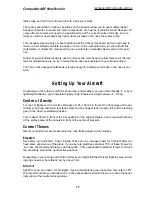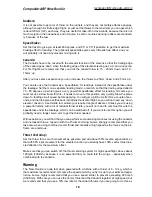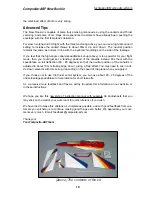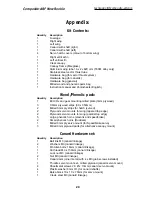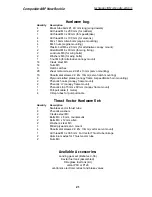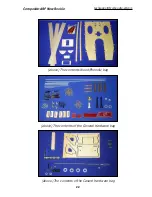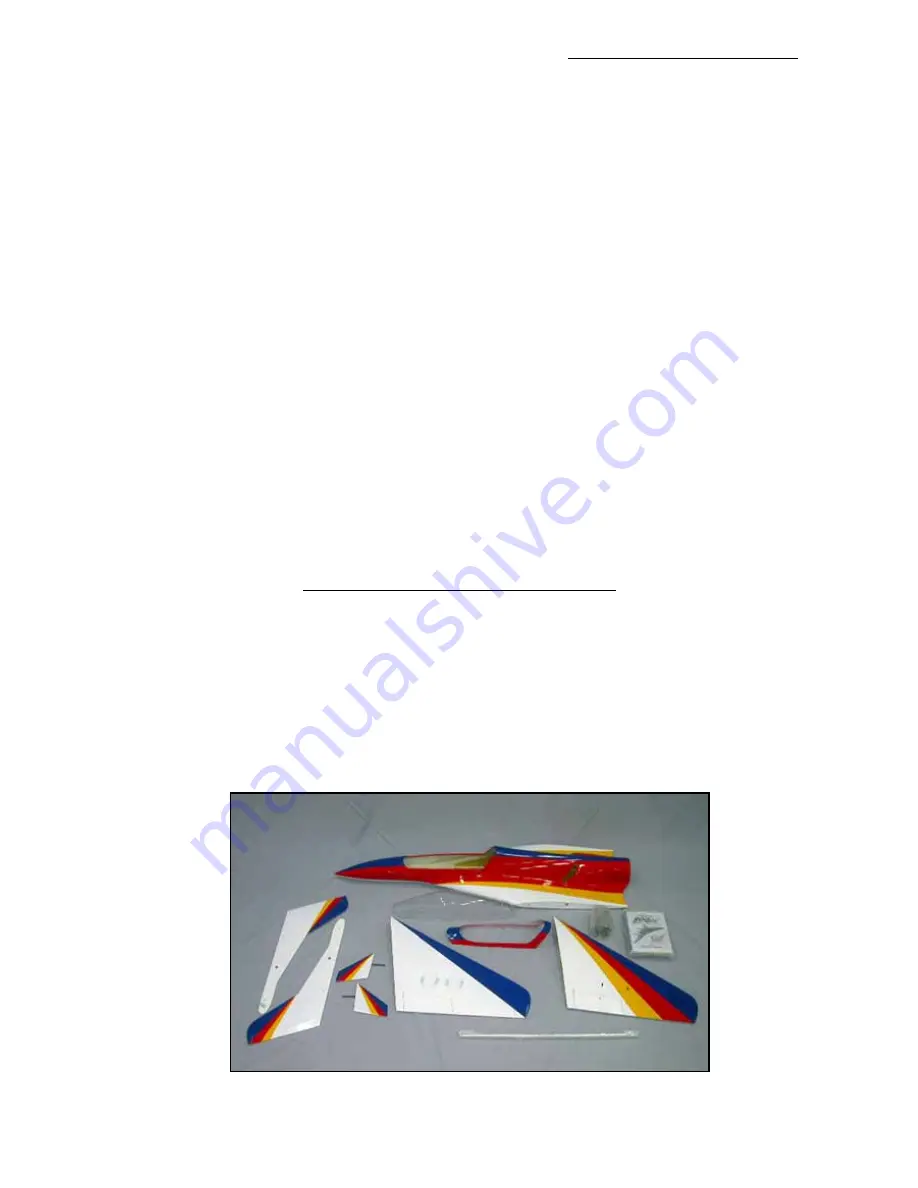
the combined effect of both is very strong.
Advanced Tips
The ‘New Rookie’ is capable of some truly amazing manoeuvres, using the canards and Thrust
vectoring, and some of our ‘Reps’ and experienced customers have already been ‘pushing the
envelope’ with the first few planes delivered.
For slow, hi-alpha and 3D flight, with the thrust vectoring active, you can use a high-rate canard
setting to increase the canard throws to about 35mm ‘up’ and ‘down’. The ‘neutral’ position
remains the same as normal, in line with the ‘eyebrow’ mouldings on the side of the fuselage.
If you feel that the high-angle canard-speedbrake set-up (above) is too powerful for your flight
mode, then you could just set a ‘landing’ position of the canards instead. Mix them with the
speedbrake on full deflection (80 - 85 degrees) so that the neutral position of the canards is
adjusted to about 10 mm trailing edge ‘down’, giving a ‘flap’ effect. You may need to mix in a lit-
tle ‘down’ elevator with this set-up, depending on the speed of the plane when you apply it.
If you choose not to use the thrust vector system, you can use about 20 - 25 degrees of the
under-fuselage speedbrake to help rotation for short take-offs.
As we receive more feedback and Tips we will try to update this information on our website, or
in these instructions.
We hope you like this new style of instruction manual, with separate A3 photosheets that you
may stick on the wall of your work room for quick reference if you wish.
We have tried to make this airplane as complete as possible, and with good feedback from cus-
tomers you will help us to continue making good things even better. We appreciate your com-
ments very much. Email: feedback@composite-arf.com
Thank you!
Your Composite-ARF Team
Composite-ARF New Rookie
techsupport@composite-arf.com
19
(above) The contents of the kit













